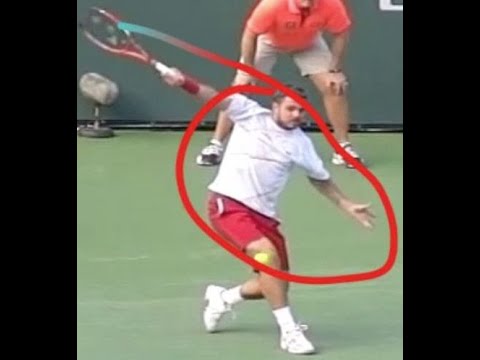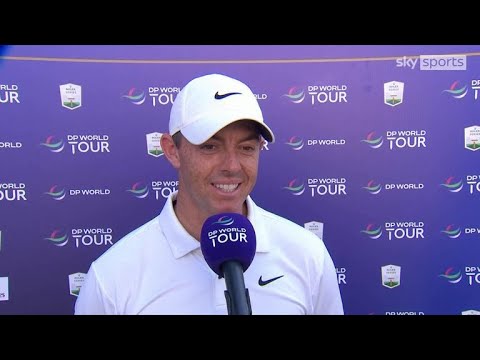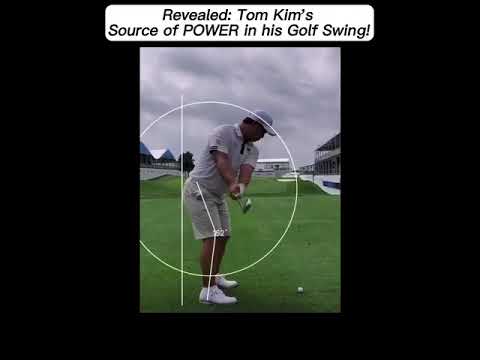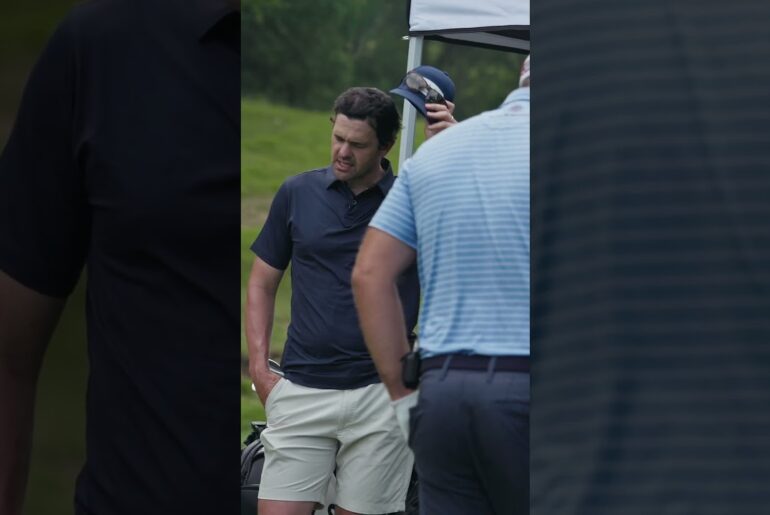This video is a deep dive into the main power sources of Wawrinka’s great one-handed backhand.
– See this 19 second video showing the main problem with Coco Gauff’s forehand (relevant to today’s focus on posture)—her body not remaining in good posture, with her body straighening before she swings through contact. Freeze the video at 11 seconds to see this straightening that causes three swing flaws:
1. Shuts down rotation of body, turning it into an arm-led, arm-driven swing, which leads to inconsistent timing.
2. Creates an outside-in swing path, closing racquet tip too soon.
3. Randomly changes the radius of her swing, randomly changing the contact point each time she changes how and when her body straightens prior to making contact. (The radius of the swing is the distance from the the middle of her chest out to her hitting arm contacting the ball) .
– Waiting vs swinging posture. See this 10 second video that demonstrates three key principles of swinging that we covered in our video lesson today:
1) We move from relaxed vertical “waiting” posture in tennis and baseball to a crouched or squatting athletic posture to really swing the bat or racquet;
2) We need a athletic posture (not standing vertical and stiff) for a swing that can generate racquet head speed and a vertical swing path that produces topspin;
3) In a topspin shot (and a baseball swing) the arms swing on a tilted plane. This plane of our swing is on the same plane as our shoulder plane, so we must tilt or de-level our shoulders. If we stand vertical, our swing path will be horizontal and will not produce the sharply vertical swing path we need to produce topspin.
– See this 30 second video of one of pro golf’s longest and best players (Bryson De Chambeau, demonstrate how he produces his power whip-like swing with the same biomechanics described in our lesson today: 1) body lowers and flexes into ground as the hands continue to pull back at the top of the swing; 2) this creates maximum stretch between the lower and upper body, and how as he unwinds his swing against his lead side, he compresses his lead arm against his chest, storing more stretch energy to unload in the whip swing.
– See the same swinging/throwing biomechanical principles discussed in Wawrinka’s main engine in this 4 minute video by top golf instructor, Milo Lines, as he talks about how to “rotate into your left arm in the swing” and “how to catapult the swing.”
– See the old paradigm swing posture (vertical) and flat swing of John McEnroe at 17-25 seconds of this video. With a vertical posture, his swing plane flattens out, and he tries to generate topspin with a last second roll-over of the racquet face. In McEnroe’s day–and prior to his day–hitting with extreme topspin was not as big a priority as it in today’s modern game.








3 Comments
This new year I have adopted Jannik Sinner as my model for the forehand. I have already had some success imitating his forehand. For years I copied Federer’s forehand with good results. Sinner’s forehand has helped transform my weak Eastern grip to a strong Eastern grip. Perhaps in the future my grip will evolve into a semi Western grip just like Sinner. Great video by the way!
Enjoyed your excellent detailed breakdown of his beautiful backhand. Are you a coach or physics professor? Thank you for sharing your knowledge!
As you mentioned at the start of the video, Stan doesn't talk about his grip or his hands, etc. Just the main body parts.
But I can't help but ask this question:
On a scale of 1 to 10….. (1 being super loose, 10 being super tight)……how loose/tight should the non-dominant hand grip be on the one-handed backhand? (during the racket take-back)